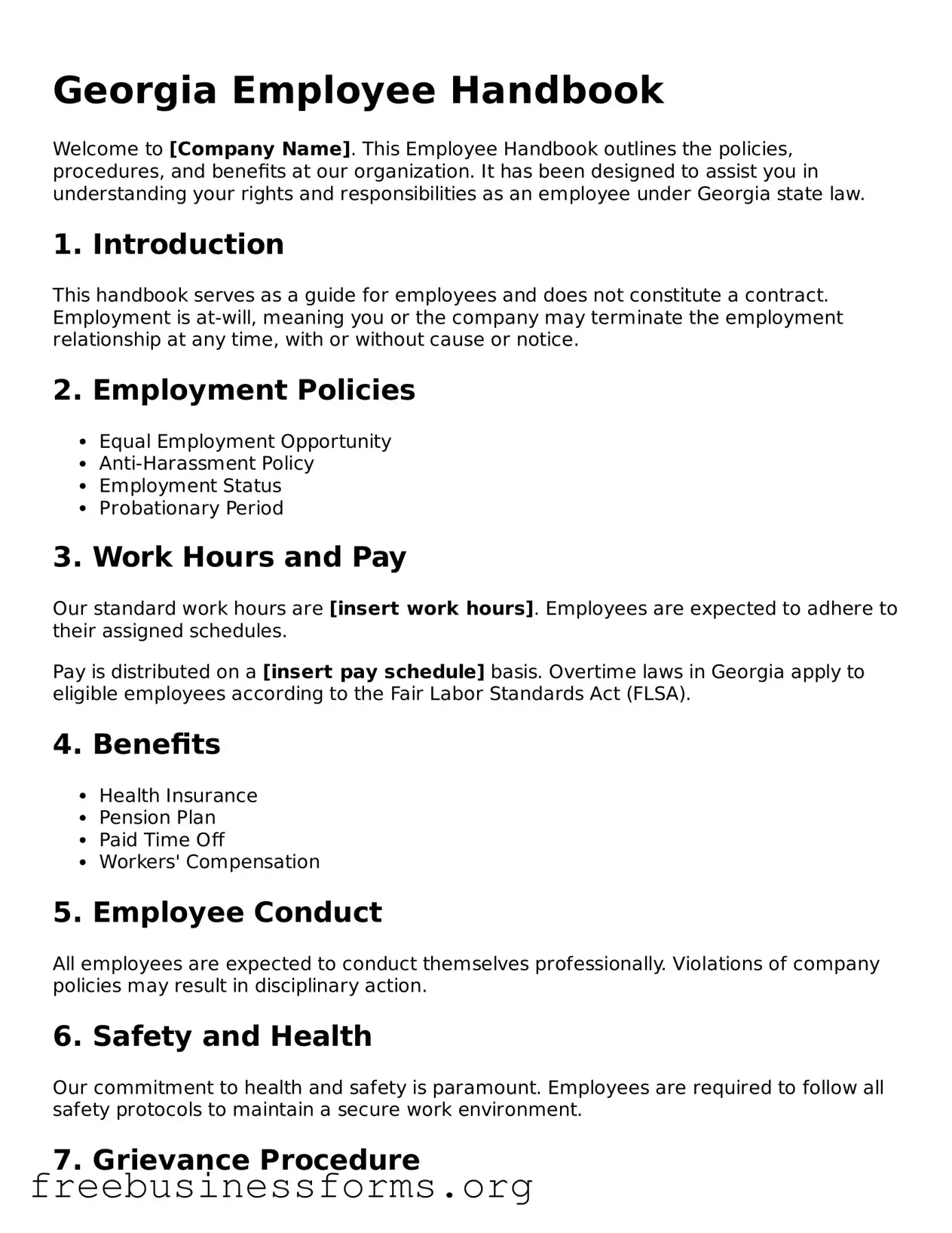Georgia Employee Handbook
Welcome to [Company Name]. This Employee Handbook outlines the policies, procedures, and benefits at our organization. It has been designed to assist you in understanding your rights and responsibilities as an employee under Georgia state law.
1. Introduction
This handbook serves as a guide for employees and does not constitute a contract. Employment is at-will, meaning you or the company may terminate the employment relationship at any time, with or without cause or notice.
2. Employment Policies
- Equal Employment Opportunity
- Anti-Harassment Policy
- Employment Status
- Probationary Period
3. Work Hours and Pay
Our standard work hours are [insert work hours]. Employees are expected to adhere to their assigned schedules.
Pay is distributed on a [insert pay schedule] basis. Overtime laws in Georgia apply to eligible employees according to the Fair Labor Standards Act (FLSA).
4. Benefits
- Health Insurance
- Pension Plan
- Paid Time Off
- Workers' Compensation
5. Employee Conduct
All employees are expected to conduct themselves professionally. Violations of company policies may result in disciplinary action.
6. Safety and Health
Our commitment to health and safety is paramount. Employees are required to follow all safety protocols to maintain a secure work environment.
7. Grievance Procedure
Employees have the right to express grievances. Concerns should be reported to your supervisor or HR, and will be handled promptly and confidentially.
8. Acknowledgment of Receipt
I acknowledge that I have received and read the Georgia Employee Handbook. I understand the policies and procedures outlined herein.
Employee Name: [Employee Name]
Employee Signature: [Employee Signature]
Date: [Date]
